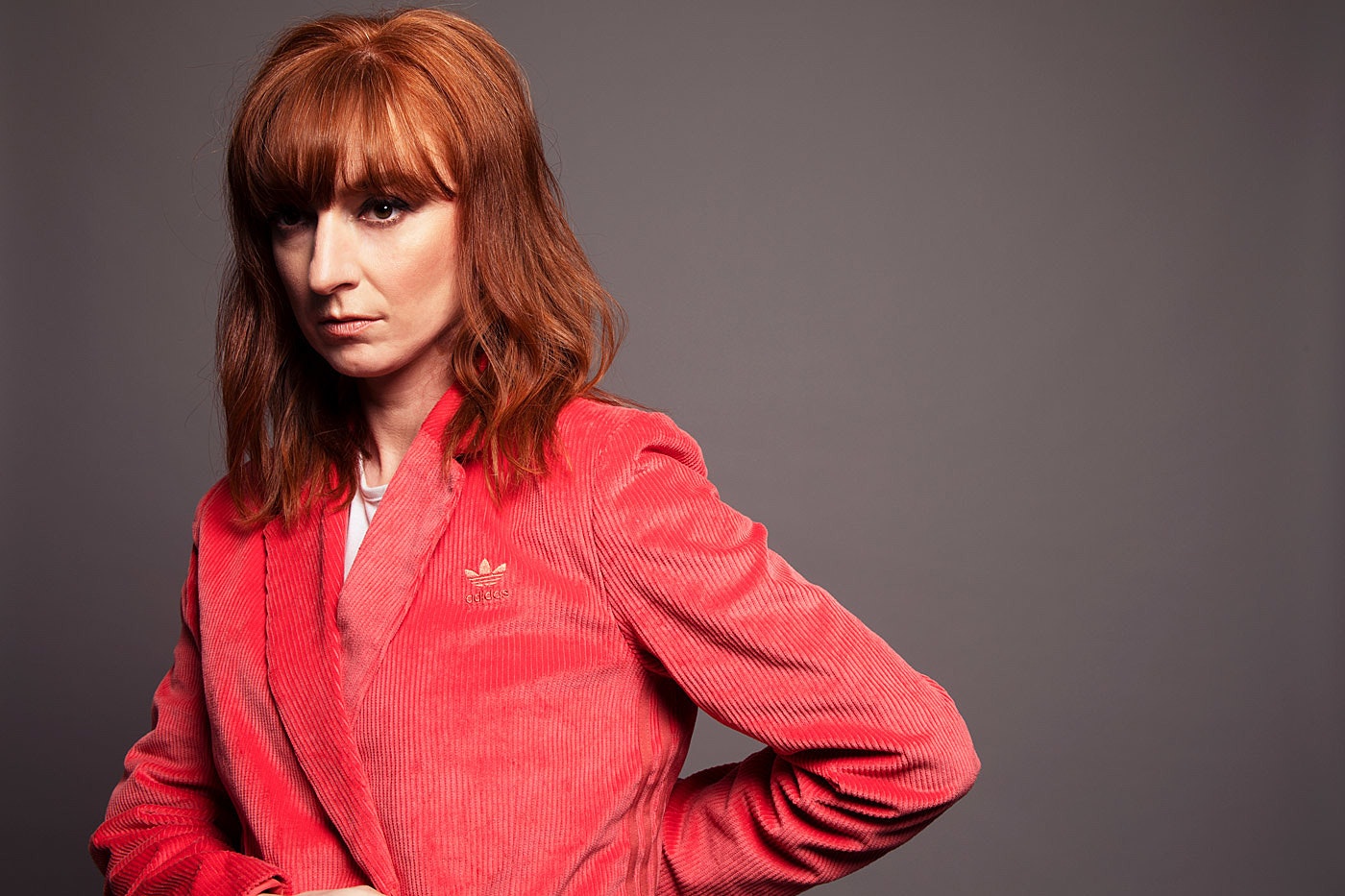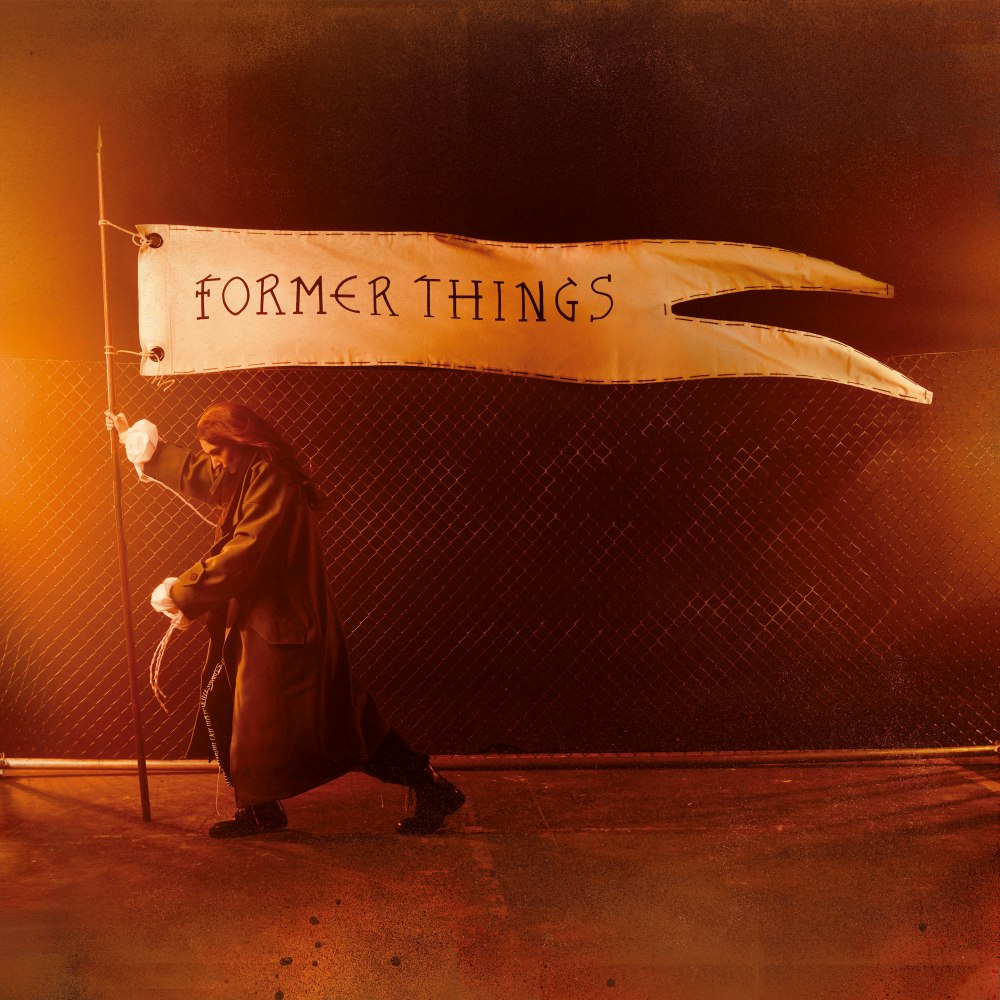Words by Jim Ottewill
From an industrial bunker in Manchester to a basement studio deep within the guts of London’s Somerset House, Julie Campbell (aka Lonelady)’s albums have been born out of transitory, musical flashes caught within temporary spaces. These temporary landscapes have left an indelible impression on the sounds she’s created.
“There’s always been a strong relationship between me, my music, and the environment I’m in,” Julie explains. “When I started out, I was adverse to creating music in proper professional studios as I just didn’t find them conducive to writing. It’s romanticising this a bit but I felt I was more connected to a kind of magic in these crumbling mills.”
Her first two albums, 2010’s Nerve Up and 2015’s Hinterland, were both constructed in these dilapidated remnants of the past, wrapped up in concrete, shadows, and Mancunian metal histories. Her latest, and arguably most polished release to date, Former Things, was born out of a residency in a central London cave amidst an array of sequencers, projections, and peeling walls.
“It’s only really for this last album that I’ve acquired a few pieces of decent studio gear,” she explains. “I don’t have the means to afford a swanky studio and tonnes of equipment. In this kind of situation, it means you have to be resourceful with what you’ve got.”
Julie’s musical talents have been carefully honed on the fringes over the last decade. Operating on her own terms as an independent artist, she’s been able to open up a unique musical sphere somewhere between the taut post-punk of her urgent debut album to the danceable machine funk of her latest release.
Raised in Ashton outside of Manchester, she threw herself into a fine art degree while experimenting with music alongside her studies. It was once she’d finished her course that Julie’s musical ambitions went up a gear. “I bought this little Tascam four-track recorder and it was a key moment for me,” she explains. “I began to record my own music, overlaying, multi-tracking and mixing, building up whole songs from the ground up to completion. It’s a way of working that has stuck with me ever since.”
Having the means and motivation to own the creative process enabled Julie to fashion her own route into the industry. Her career has been ably supported by the brilliant Warp Records, a suitable home for her own idiosyncratic sound, in part inspired by some of the imprint’s iconic catalogue of beeps and bleeps.
There’s always been a strong relationship between me, my music, and the environment I’m in.
“I’d make and send out these lovingly fashioned press kits,” she says of her early days trying to secure both an audience and industry attention. “Our lives were still mainly offline back then so my method was very old school, sending out CDs and little postcards to promote myself.”
One of these kits found the right ears and led to Julie being booked to perform at SXSW, the legendary music industry event in Austin, Texas where many fledgling stars have broken through. “It was literally just me and my then-boyfriend who was pretending to be my manager,” she remembers of the event. “We flew out to the US and I was on this Manchester showcase with the Charlatans and the Happy Mondays. That was my first gig outside of the city, which was just crazy.”

Some of Julie’s first musical experiments were unveiled to the wider world as part of a self-released single that impressed Warp and snagged their attention with the subsequent releases on the label that were mainly shaped in and around Manchester.
“Nerve Up was made in this abandoned mill in Miles Platting in Wellington House which is now where online radio station NTS live broadcast from,” she says. This derelict space was abandoned, an environment reflected in the scratchy, angular sounds of the record. “We built a room in the studio and I worked closely with producer Guy Fixen on bringing in gear and getting the right set up,” she states. “It was very bunker-like and the record sounds comparatively stark.”
The follow-up Hinterland was mainly written in her Manchester flat, then recorded in various spots around the city including a studio at Salford’s White Hotel.
“I’ve definitely run the gamut of these raw industrial spaces,” she continues. “But I think there is a thematic line connecting songs across all three records and hinting at the musical avenues they take. For each, I try to get my hands on particular pieces of equipment, then this dictates the kind of sound I’m going to create.”

Julie’s latest album was the result of a residency at Somerset House that began in 2016. Somerset House Studios Director Marie McPartlin invited her to become a studio member so Julie set up her gear in ‘The Rifle Range’, an 18th-Century Naval shooting gallery. She recorded while projecting Cabaret Voltaire super-8 videos and Ingmar Bergman films across the stone walls.
“I jumped at the chance to go there and received some Arts Council funding to help me slightly renovate the space,” Julie recalls. “I was keen to be somewhere which provided me with so much stimulus and as a former arts student, I was in heaven going to visit galleries all the time in central London. I found it really energising.”
I bought this Doepfer midi-analogue sequencer. It’s a very chunky piece of gear, which I used as my central writing tool during recording.
Julie also took the opportunity to shake up her studio setup too, managing to get her hands on some key pieces of hardware to work on. “I bought this Doepfer midi-analogue sequencer. It’s a very chunky piece of gear, which I used as my central writing tool during recording,” she explains. “I also had these two analogue synths, an Arp Odyssey and a Korg MS-10, along with a bunch of samplers and drum machines. I would use these pieces on every track and set up this conversation between the Korg and the Arp.”
Julie looked to some of the most innovative electronic releases of the past to inform the sonic palette for her album, including soundtracks to films like Beverly Hills Cop and classic records such as Neneh Cherry’s Raw Like Sushi.
“I think Former Things goes back to my childhood musically with all of these kinds of electro textures. I also stumbled on this Cybotron album ‘Enter’ from 1982 - this amazing classic electro album. This record was a great chance for me to explore these sounds.”
For the most part, Julie’s creative process has always been a solitary one with very little in the way of outside influence. “No one comes in and hears a song in progress. I work away at my music until eventually it’s done and ready to be released,” she says on how the tracks were pieced together. “I made conscious decisions to use very solid machinery for this record,” Julie adds. “I don’t tend to use software or plug-ins. I aim to do as much as humanly possible in real-life but I do edits on ProTools and that’s a very long process.”
Julie finds it tricky to “trust her ears” when working with plug-ins, hence her love for the fallibility of hardware when recording. “I have this weird drum machine that speeds up on its own - it will sometimes just decide to up the tempo on its own but I love the wonkiness of this,” she laughs “maybe it’s a bit of an existential thing but if I was just making music with software, I don’t know where I would be with it. It just doesn’t work for me.”
Many of the tracks on Former Things were born out of rhythms and beats. It’s a patchwork of different drum machines including classics such as a 909 and Linn LM-1 to newer machines including the MFB-Tanzbar drum computer. “It was very much about curating a scaffolding of beats. I then worked into the sound and layered it up in what I think of as a very painterly way,” she states.
Julie cites the album’s title track and electro-funk of the lead single, (There Is) No Logic as two of her favourite moments from the album. “I’m proud of all the songs but I love No Logic, it just came very quickly and was fun to chop all the vocals. Then the title song is a really meaningful centrepiece to the record, it captures that wistfulness and vulnerability.”
While Julie is now gearing up for an autumn tour to celebrate the album’s arrival, she is hopeful that new generations of songwriters and artists will be fearless when crafting their songs. For her, there are no right or wrong ways of working in the studio.
“I really believe in following your own path when making music and avoid looking to anyone else for approval,” she says. “For this album, I needed to have projections on the walls and films while making it, and if there is something you need to do to make your creative process work better, just do it.”
She also feels that the world of tech and the studio continues to be very male-dominated. Although this imbalance is gradually changing, Julie feels that no one should be put off or intimidated from getting their hands dirty with music-making. “Grimes is brilliant at talking about how she makes her music and has hopefully had a huge impact on girls by being a studio geek but being playful with it too,” she states. “I hope when I talk about it, I help others too. I want to encourage people to pick up instruments and get stuck into making music. It’s not as complicated as some like to make out...”
